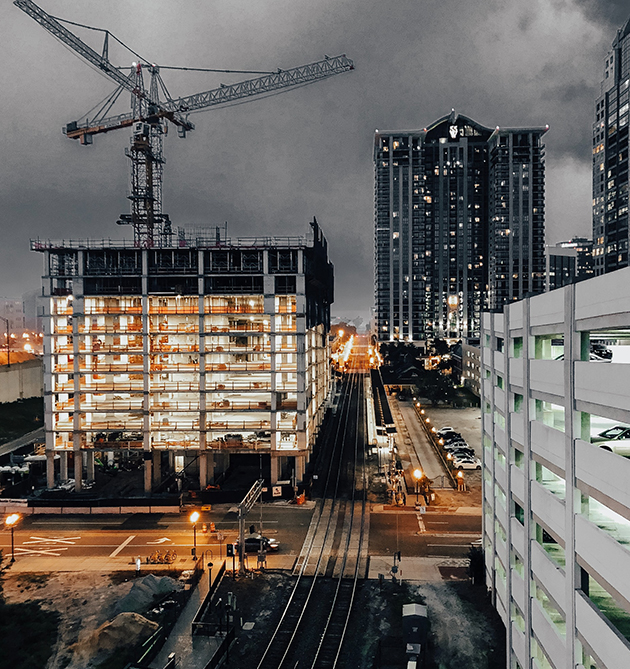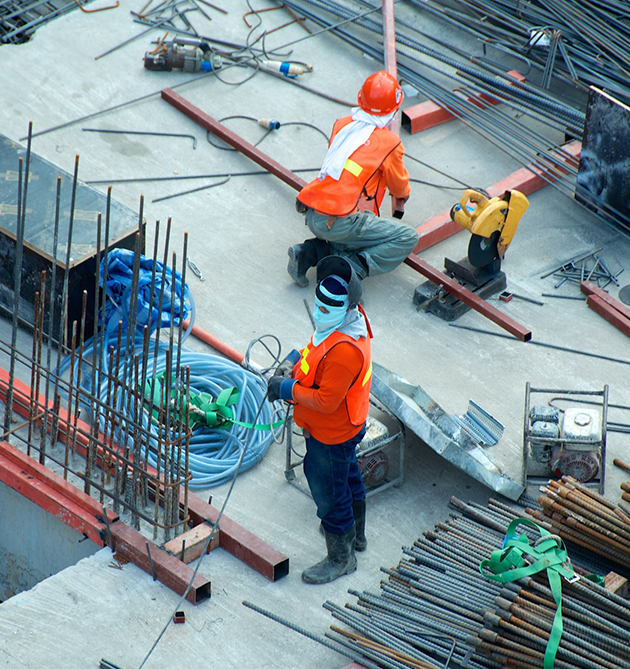
- 7Dalea8ZAbL
- January 2022
- Residential
This framework of the future of real estate provides a set of enablers, including accelerating digitalisation and innovation to address everything from construction costa to the occupant experience.
The Framework for the Future of Real Estate described in this Insight Report provides a set of enablers, including accelerating digitalisation and innovation to address everything from construction costs to the occupant experience; ups-killing and attracting workers with specific talent and knowledge of digitalisation and sustainability; demonstrating clear, value-proof business cases for investment in technology, sustainability and affordable housing; engaging stakeholders, both across the industry value chain and with the local community; and ensuring regulatory frameworks that address supply challenges and sustainability goals and provide proper zoning and density.
The World Economic Forum’s Real Estate CEOs have developed a vision for the future of real estate. It is a future in which buildings provide comfort, are equipped for the most unprecedented events, support human and planetary health, and are affordable and accessible for all of society. It is a vision in which the real estate of the future is liveable, sustainable, resilient and affordable. To deliver on this vision, this Framework for the Future of Real Estate was created to provide a pathway for the industry to transition, drawing upon best practices and business solutions from successful case studies provided by World Economic Forum Partners around the world.
4 Key Pillars
- Liveability
- Sustainability
- Resilience
- Affordability
The future vision of cities and buildings is based on four pillars: liveability, sustainability, resilience and affordability. It identifies key enablers to chart the course for change.
Liveability
A combination of factors contributes to a good quality of life, including well-developed buildings and communities, human-centric and inclusive designs (designed for people of all ages and abilities), and social, community and recreational facilities that meet the needs of citizens in tandem with real estate development. Liveability encompasses the interactions between spaces and occupants to ultimately enhance the human experience. People spend about 90% of their day indoors,5 which makes buildings instrumental in ensuring liveability. Research has shown the positive correlation between a comfortable environment and productivity.
Sustainability
Buildings account for nearly 40% of global greenhouse gas emissions. By 2030, the current building stock will make up 80% of the built environment in developed countries, and only a tiny proportion of buildings – about 1-2% – is currently renovated in any given year. To meet net zero carbon goals, which requires abating the carbon emitted throughout the full asset life cycle (e.g. building development, operation and decommissioning), action must be accelerated. This will require energy retrofits of old buildings, which are costly but could help cut energy demand for heating by two-thirds or more and would reduce or eliminate CO2 emissions by switching to renewables or decarbonised electricity. It will also require the renovation or repurposing of buildings rather than demolition. The Royal Institute of Chartered Surveyors (RICS) has calculated that “35% of the life cycle carbon from a typical office building is emitted before the building is even opened”; that number for a residential building is 51%. This suggests it takes decades to pay back carbon debt, despite the emissions savings being created in the new building.
Resilience
At the heart of building resilience is future- proofing cities and buildings and the humans that occupy them, by mitigating the effects of unforeseen natural and man-made events, such as climate, financial and health crises, and preserving the cultural identity of communities. Assets need to withstand a variety of unpredictable shocks and be flexible to adapt to changing consumer demand throughout their full life cycle.
Affordability
Providing both individuals and companies with fair access to quality space to live and conduct business is essential to the overall health of society. The cost of space, as well as location, can prohibit people from meeting other basic living costs, threatening their employment and fundamental human rights. Affordability must comprise both financial access and appropriate asset standards Financial access: access to affordable rents, or fair down payment requirements and mortgage rates as well as reasonable operating expenses (e.g. tax, insurance, repairs) Appropriate asset standards: sufficient spaces and healthy conditions as well as convenient locations with fair access to basic services (e.g. education, public transit, healthcare).
Enablers
Delivering buildings that embrace the four pillars will require the following key enablers.
Digitalization & Innovation Technology and digital solutions will be among the most critical enablers to usher in the new era of real estate, allowing not only the customization of spaces according to occupant needs (e.g. temperature, humidity) but also taking building operations to the next level and addressing sustainability and affordability
Data-Driven & Autonomous Buildings Autonomous buildings continuously learn, adapt and respond to the needs of people and the environment. Exploiting a continuous feedback loop of rich data made available by the buildings’ digital infrastructure provides lessons about how buildings’ spaces, places and services are being consumed to continuously improve products and design decisions for the benefit of people. Autonomous buildings auto- tune, adapting to dynamic indoor and outdoor conditions, create optimal working conditions for improved productivity, empower people to work effectively and collaboratively, and make people healthier.
Interconnected Buildings interconnected system of buildings can operate together to create efficiencies (e.g. a supply–demand energy balance).
Construction Costs Innovative design and construction techniques along with more advanced materials can help lower upfront development and retrofit costs, supporting the affordability agenda.
Cybersecurity & Privacy Data ownership and use regulations will be critical in the next decade. Privacy and security must be top priorities in the digitalization process to ensure occupants and owners are protected.
Talent and knowledge
The future of real estate requires extensive and up- to-date knowledge and competences as well as a leading talent pool with broad market expertise and knowledge. This means upskilling existing employees and focusing on attracting talent. The industry should also establish the right corporate structure at the C-suite level and appoint leaders with capabilities to head the transformation. For example, by having a Chief Technology Officer, Chief Data Officer, Chief Sustainability Officer or Chief Resilience Officer, companies can better ensure that goals related to sustainability, resilience and technology are met. It is also critical for real estate businesses to actively work to create diversity and inclusion in their workplaces and ensure more equal representation in terms of age, gender, ethnicity, religion, disability, sexual orientation, education and national origin.
Value-proof business case
New solutions are only scalable when there is a compelling business case and clear return on investment. Every solution proposed throughout this Framework is feasible and scalable, but the lack of alignment of interests among stakeholders often inhibits deployment. Creating comprehensive metrics that reward all stakeholders throughout the value chain will foster investments and unlock the needed transformation. Increased transparency is also needed. A transparent real estate market can be defined as “one in which stakeholders have ready access to high- quality market data and performance benchmarks; where there is certainty, consistency and where rigorously enforced rules and regulations exist”.
Stakeholder Engagement
The real estate community (policy-makers, lenders, investors, tenants, contractors, etc.) must actively collaborate to develop more effective solutions to industry challenges. For example, conversations with policy-makers would highlight industry needs and con- cerns, and vice versa, to ensure policy is capable of im-plementation. Partnerships with tenants, operators and asset managers to define cost-sharing mechanisms would encourage the implementation of new solutions that improve operations while reducing costs.
Meaningful collaborations with academia and civil society are also fundamental. Cooperation with academia can enable businesses to understand the latest research, innovation and technology, which can be incorporated into developments. Collaboration with civil society ensures that citizen needs are fully understood, resulting in human-centric developments that encounter fewer obstacles during the urban planning process. Engagement with the community is also essential as the rise of local resident opposition to projects, often referred to as NIMBYism, an acronym for “Not in My Back Yard”, can jeopardise successful completion.






